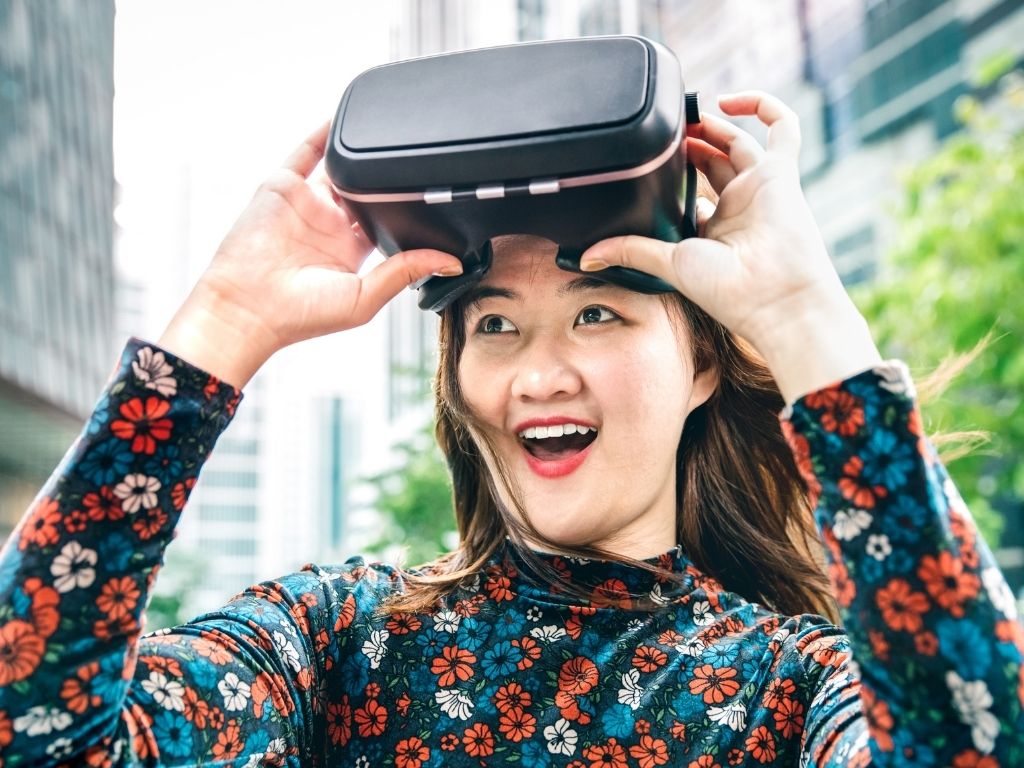Everything About The Google Metaverse’s Foundation
The relevance of the metaverse itself is where the Google metaverse comes from. The best way to think of the metaverse is as a virtual environment that coexists with the real world. The metaverse is a wholly immersive and interactive 3D reality, so you may enter those creations and experience them like you would an actual building. Devotion on the part of an architect can result in the construction of distinctive physical spaces. Additionally, a business’s understanding of a deeper metaverse meaning might provide fantastic digital outcomes.
Similarly, you can ask loved ones to participate in your exploration. Depending on what you’re using to reach the metaverse, there are many ways to go about it. The most immersive possibilities are augmented reality (AR) and virtual reality (VR). However, some metaverse can be accessed via computers, smartphones, and even video gaming consoles. Nobody can predict what the metaverse will look like in the future because it is constantly expanding. However, we are aware that the metaverse, in some capacity, is the future. You may observe how several individual metaverse meanings can influence that medium in the article “Metaverse Meaning; Different Ways of Defining the Metaverse.”
Describe Google.
Any application of the metaverse draws on the fundamental principles of its developers. To comprehend the Google metaverse, one must first understand Google. Google is frequently considered to be a search engine. And when it first debuted in 1998, Google Search was, in fact, the company’s first substantial offering. Google’s history as we know it now began in 2004 with the introduction of Gmail. At the time, the service was rather elite. For users to register for the service, they require an invitation. As a result, Google could gradually expand to satisfy user demand. The architecture of Google finally developed to the point where it could effectively function as a web-based platform. The business quickly spread the concept of browser-based applications.
The ability of a browser to function as a computer platform in and of itself was proved by services like Google Maps, Google Docs, Google Drive, and several others. And Google would further improve this experience by utilizing a highly efficient Javascript engine specifically designed for web apps while developing the Chrome browser. In 2008, Google took the next significant step forward when it took part in the introduction of the first Android-powered phone. Google dominated the majority of computing platforms at that time.
Shout out to @ReadyPlayerMe for the metaverse threads. Now if only we could look this stylish IRL…
— Google Play (@GooglePlay) January 24, 2022
Google Metaverse: Knowledge
The forthcoming Google metaverse’s specifics are still largely unknown. But Google CEO Sundar Pichai just had a conversation with Emily Chang of Bloomberg about the metaverse. Pichai gave particular attention to how humans interact with technology. He claims that computing adapts to humans rather than individuals adapting to computers. The CEO underlined that not every interaction between people and computers would include them speaking to a black rectangle in front of them.
Instead, Pichai thinks computers will become more lifelike so that users can converse with them as they would a natural person. Additionally, he emphasized that computer interfaces will always be available whenever people need them. AR and ambient computing will be a part of this future. The immediate environment is referred to as ambient in this sense. And AR has augmented reality, combining digital data with analog surroundings. This implies that humans can use a computing platform that is always active and integrates the physical and digital worlds. This concept is frequently emphasized to varying degrees in different metaverse implementations.
Google, in particular, seems to seek to obfuscate the line between the physical and digital worlds. Pichai also noted that many people frequently mean different things while discussing the metaverse. When talking about the topic, the definition of the metaverse will vary greatly depending on the context. Chang prodded the CEO for more insights about what he thinks the metaverse will be. Pichai remained mum about the specifics of Google’s metaverse plans, which was to be expected. Still, he did mention that he sees computers developing in an immersive way through augmented reality. You’ll soon find that this is in line with several open Google metaverse projects.
Past and Future Products and Acquisitions for Google Metaverse
The metaverse Given how much the corporation produces, defining the Google style might be difficult. Google has never been afraid to try new things. The corporation creates and buys a variety of technologies, many of which undergo significant changes over time. However, the projects that Google worked on or accepted below offer some solid indications of what may be on the horizon.
Google Glass
A bit of an anomaly in the Google metaverse is Google Glass. It was initially made public in 2013, amidst a lot of misunderstandings. Many believed it offered the more sophisticated augmented reality features in modern gadgets. Furthermore, when it became known that Google Glass was more geared toward recording photos and videos, it sparked public anxiety about covert spying.
Ultimately, the first iteration of Google Glass was never wholly made available to the general public. However, Google Glass was successful enough in business settings to necessitate a second edition—Google Glass Enterprise Edition. Enterprise Edition was used in even more diverse ways in industries like medicine. Google also revealed the Google Glass Enterprise Edition 2, which has far more modern capabilities than the first version, in 2019. Although Glass failed to appeal to the general public, it continues to be popular among specialized enterprise-level users.
Also, read – You Should Be Aware Of These Metaverse Security Issues
Daydream by Google
A sort of sequel to Google Cardboard was Google Daydream. Daydream operated similarly to Cardboard by effectively converting your Android phone into a VR display. The primary distinction is that Daydream included specialized hardware. Daydream comprises a VR controller and a headgear with a slot for your phone.
The innovative technology was used. But according to Google, the primary reason for the failure was that Daydream users immediately lost access to their phones. Using a phone to place a call or check an app is still available when using a specialized VR headset. However, Daydream forced users to decide between using their phone as a VR device and using it usually. Additionally, Daydream’s $100 price tag didn’t offer much more than what Google Cardboard could provide. Additionally, you could create Google Cardboard out of cardboard.
Stay informed with daily updates from Blockchain Magazine on Google News. Click here to follow us and mark as favorite: [Blockchain Magazine on Google News].
Get Blockchain Insights In Inbox
Stay ahead of the curve with expert analysis and market updates.
latest from tech
Disclaimer: Any post shared by a third-party agency are sponsored and Blockchain Magazine has no views on any such posts. The views and opinions expressed in this post are those of the clients and do not necessarily reflect the official policy or position of Blockchain Magazine. The information provided in this post is for informational purposes only and should not be considered as financial, investment, or professional advice. Blockchain Magazine does not endorse or promote any specific products, services, or companies mentioned in this posts. Readers are encouraged to conduct their own research and consult with a qualified professional before making any financial decisions.

 Bitcoin
Bitcoin  Ethereum
Ethereum  Tether
Tether  XRP
XRP  Solana
Solana  Dogecoin
Dogecoin  USDC
USDC  Lido Staked Ether
Lido Staked Ether  Cardano
Cardano  TRON
TRON  Avalanche
Avalanche  Toncoin
Toncoin  Chainlink
Chainlink  Wrapped stETH
Wrapped stETH  Shiba Inu
Shiba Inu  Wrapped Bitcoin
Wrapped Bitcoin  Sui
Sui  Hedera
Hedera  Stellar
Stellar  Polkadot
Polkadot  WETH
WETH  Bitcoin Cash
Bitcoin Cash  Hyperliquid
Hyperliquid  LEO Token
LEO Token  Uniswap
Uniswap  Litecoin
Litecoin  Pepe
Pepe  Wrapped eETH
Wrapped eETH  NEAR Protocol
NEAR Protocol  Ethena USDe
Ethena USDe  USDS
USDS  Aave
Aave  Internet Computer
Internet Computer  Aptos
Aptos  Cronos
Cronos  POL (ex-MATIC)
POL (ex-MATIC)  Mantle
Mantle  Ethereum Classic
Ethereum Classic  Render
Render  WhiteBIT Coin
WhiteBIT Coin  Monero
Monero  Bittensor
Bittensor  Dai
Dai  MANTRA
MANTRA  Artificial Superintelligence Alliance
Artificial Superintelligence Alliance  Arbitrum
Arbitrum  OKB
OKB 



